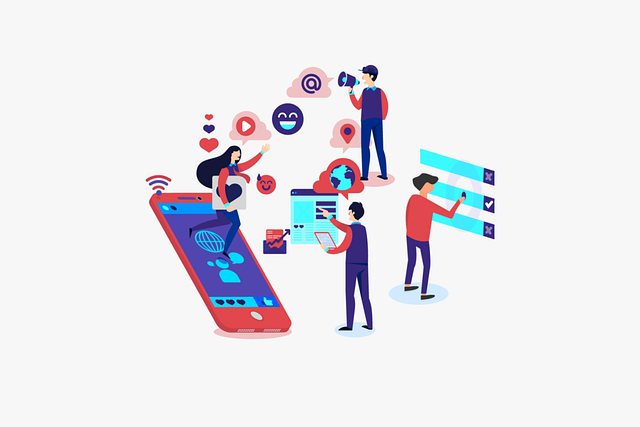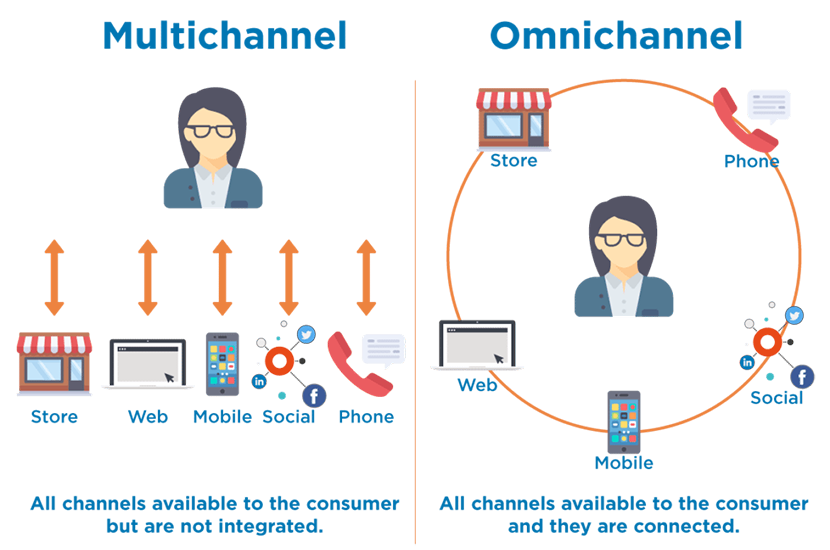Explaining The Difference: Omnichannel vs. Multichannel Marketing
To the layperson, the words omnichannel and multichannel sound interchangeable. They’re not; there’s a meaningful difference. When it comes to marketing, it represents a crucial decision on which to choose.
Read on to find out the difference and how to choose the right marketing strategy for your business. If you want to grow your newsletter with social media ads, find new ways to find business partners and establish your brand, an omnichannel approach could be the best fit for your business.
Simply put, omnichannel marketing is an approach that encompasses all channels, including social media. It allows customers to easily move from one channel to the next, which could lead to increased engagement and better customer experiences.
Let’s dive into the differences between omnichannel vs. multichannel marketing.

Definitions
First, let’s define some terms.
Channel
Marketers use a variety of channels to reach their audience. All are methods of communication with customers, whether one-way or two-ways.
Examples of channels:
- Social media
- Telephone
- SMS
- Brochure
- Print media
Each channel reaches certain demographics better than others. You should have an idea of your target customer before choosing the channels on which you run a campaign. For example, print media still has good reach with the over 65s; 21% of them read newspapers on a daily basis. If your target audience skews older, it may be worth investing in newspaper advertising.
Multichannel
A multichannel approach uses two or more channels to communicate with customers. Each channel operates independently of the others. For instance, a company may have a website and simultaneously run TV ads. One has nothing to do with the other. The teams responsible for each channel have little to no contact.
Each channel competes with the others to attract the most customer attention. This can lead to the creation of effective campaigns. What it doesn’t provide, however, is a unified and seamless customer experience.
Omnichannel
Simply put, omnichannel marketing is an approach that encompasses all channels. This doesn’t mean using every communications medium possible. It means having a unified approach across all channels.
It works something like this. A prospective customer may visit your website to view a product they’re interested in. They’d then start to see your ads more on their social media. Specifically, ads showing the product they saw on your website.
An omnichannel approach is especially useful for customer service. A customer may contact you via email with a query. They could be invited to a live chat for further assistance. They may then receive a phone call from your outbound contact center. That’s a call from a company to a customer, in case you’re asking “what is an outbound contact center?”
At each stage, customer representatives know all the details of the query. It’s a seamless journey for the customer. The channels are integrated and information can flow between them.

Omnichannel vs. Multichannel differences explained
Let’s go into detail about how multichannel differs from the omnichannel approach.
Focus
Each marketing method has a different focal point. Multichannel marketing is centered around channels. Omnichannel marketing puts the customer at the center of things.
Multichannel marketers aim to get their message out on as many channels as possible. There are many touchpoints for customers but they aren’t always joined up. This can lead to an inconsistent experience when customers move from one channel to the next.
Making customers the focal point of your marketing provides them with a seamless experience. This is the aim of the omnichannel approach. Customers have a consistent experience from first contact through to post-sale support.
Customer engagement versus customer experience
When choosing a marketing strategy it’s crucial to understand your aims. Are you prioritizing a high-profile campaign? Are you focused on creating a top notch experience for customers?
The purpose of a multichannel campaign is to get your message out to as many ears and eyes as possible. This is a great way of boosting awareness of your brand, which is vital to a successful sales and conversion funnel.
Multichannel marketing uses social media channels to get customers to engage with the content. If it garners lots of likes and shares, it boosts your brand’s profile.
Omnichannel marketing, on the other hand, doesn’t need lots of attention. The focus here is to allow customers to easily jump from one channel to the next. If they visit your website, for example, they can quickly get onto a live chat and discuss their needs further. This means you need unified communication tools to manage the channel hopping.
Integrated or separated?
A business using a multichannel marketing approach has to manage each channel separately. They need to be as effective as possible and so require certain skill sets.
By its very nature, multichannel marketing is about separate channels. Each channel is competing to be the best at achieving business goals. This means that marketers use many different channels.
Omnichannel marketing seeks to create an integrated experience for customers. The lines between channels are blurred so customers can easily move between them. This necessitates the use of more online and digital technology. It often leads to the use of fewer channels.
Businesses using an omnichannel approach must ensure channels are interconnected. It’s only through this method that they can deliver a consistent level of service to customers. It makes sense then to manage all social media in one place. Customer representatives need eyes on every contact point the customer has had with the brand.
How to choose
Now it comes down to the big debate, omnichannel vs. multichannel, which one do I choose?
Considering whether a multichannel or omnichannel approach would work best for your business is an important part of fully optimizing your SaaS marketing journey. How you choose will depend on a number of factors. Ask yourself a few questions to get started.
- What’s your budget?
- How established is your brand?
- How much support do customers need?
- How tech savvy is your target customer?
Choosing mulitchannel
A multichannel approach is great for businesses wanting to quickly raise their profile. It’s easy to establish and budget friendly. If the business lends itself to physical stores, multichannel marketing can drive footfall.

Another advantage is that managers of each channel can focus on their work alone. They don’t need to communicate with teams working on other channels. Be wary though; this can result in inconsistent quality from channel to channel.
As you can see, there are pros and cons when deciding on choosing omnichannel vs. multichannel marketing, however it mainly comes down to the brand or businesses main goals, budget and team structure. However, both can be achieved and help improve your strategies.
